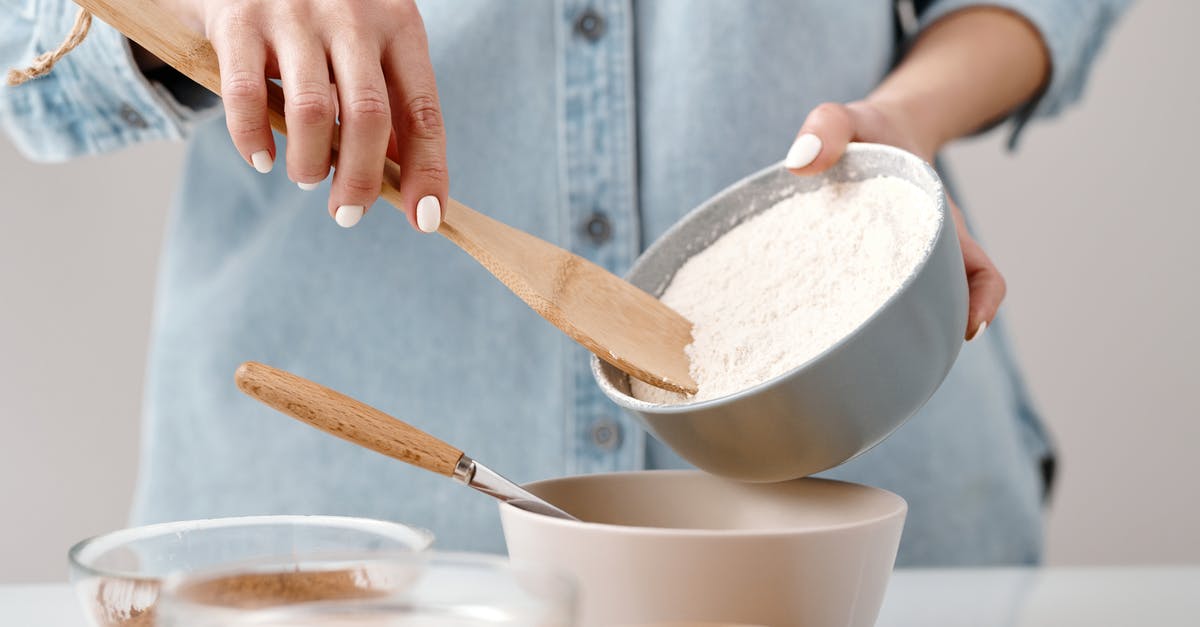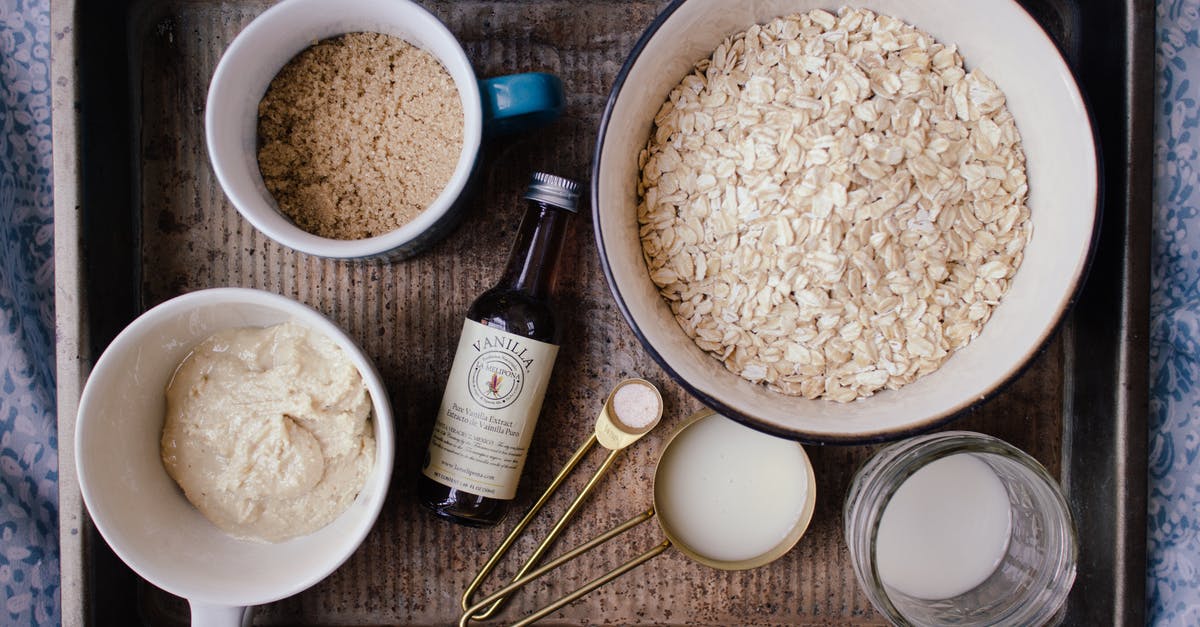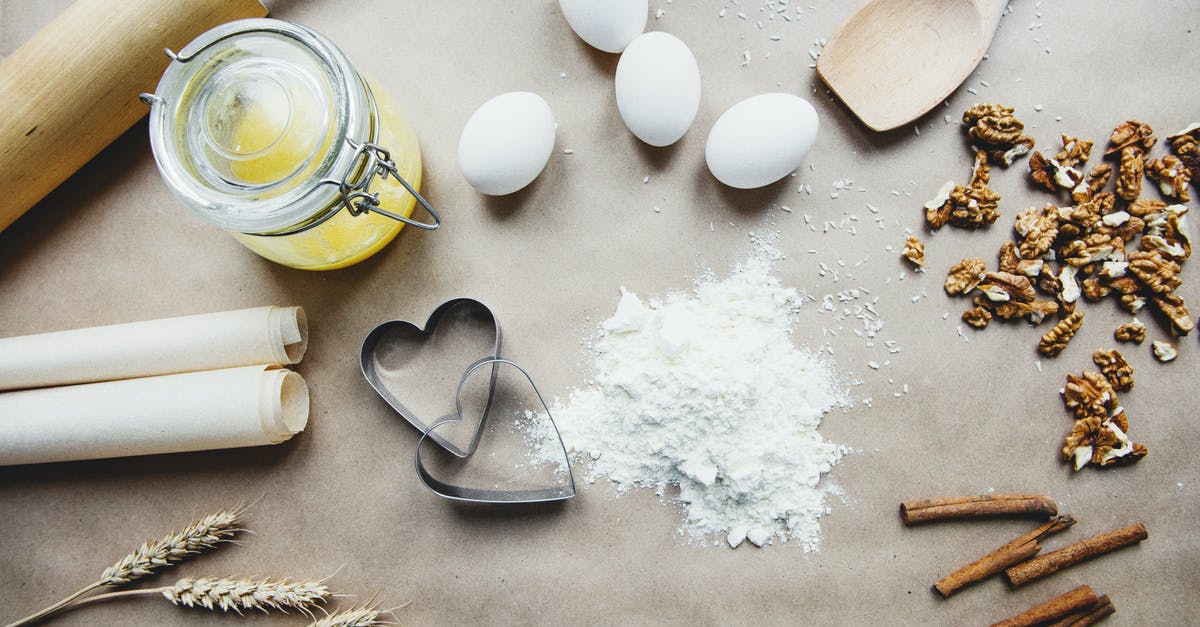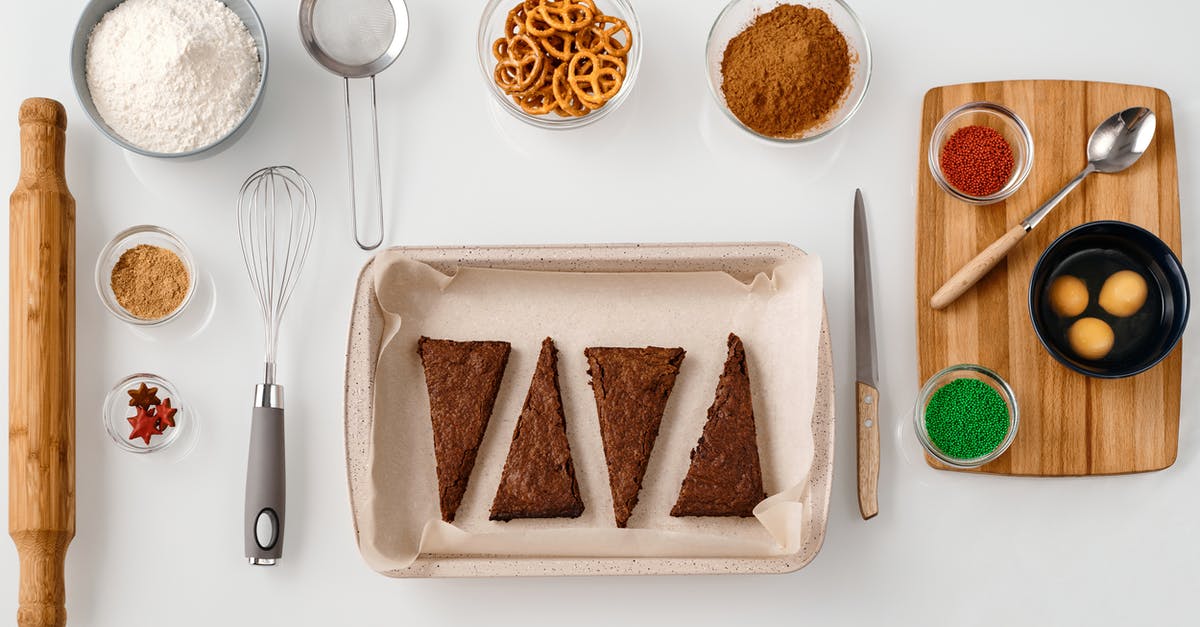Why use baking powder instead of yeast?

I am asking the converse of the question "Why use yeast instead of baking powder?"
For example, can banana bread be made with yeast instead of baking powder? It seems it would rise better, but perhaps people like baking powder because they like banana bread denser or wetter or something?
Best Answer
The main reasons are speed and convenience. Yeast takes longer (even "instant" yeast) and requires more maintenance: waiting for dough to rise, etc.
But those are the historical reasons for the adoption for baking powder. Since it became common, another reason emerged: that is, it's very difficult if not impossible to get some kinds of texture and crumb that you get with baking powder by using yeast.
Why? As dough sits (necessary for yeast to rise), gluten chains begin to form. The longer the dough sits, the more gluten chains you get. Even with pastry or cake flour, the dough will get tougher over time (though obviously not as much as with all-purpose or bread flour).
So, yes, you can make banana bread with yeast. But by the time your dough has risen, it will have become more "bread-like," with a chewier crumb, rather than the tender "crumbly" texture most people are used to in modern quick breads. That is even more true if you de-gas the dough and let it rise a second time, which is generally necessary (1) to get maximum rise, and (2) to even out the gas bubbles so you don't end up with large holes in the final product.
There are entire genres of "yeasted cake" recipes, which used to be quite common in Europe. Even with a lot of sugar, they are often "bread-like," sort of like sweet brioche. They can have a fine crumb, but they won't have the tenderness of a cake made with baking powder (or a quick bread like banana bread, for that matter, which is really like a cake/muffin).
There are entire genres of modern cakes (and quick breads) that only became possible with the use of baking powder (or at least baking soda with an acid). Before chemical leavening, you were limited in tender cakes to a few genres that depended on whipped eggs or egg whites (e.g., angel food cake), creamed butter/sugar (e.g., pound cake), etc.
Aside from texture, there's also a flavor issue. Generally most people like the added flavor from yeast, but it also can add a "bread-like" or "yeasty" aspect to the flavor, which may not be desirable in some cakes. Modern baker's yeast is better than historical yeasts in this regard. Baking powder can add a different (more "chemical") flavor, but with proper proportions and/or with acid in the batter to ensure a complete reaction, it is often barely noticeable.
EDIT: SgtStens makes a great point in another answer, which I was thinking about in my final paragraph with flavor, but didn't note clearly. High sugar content in doughs/batters will inhibit yeast activity. That's why most traditional yeasted cake recipes end up using a relatively low-sugar batter and then add more sweetness through a glaze, filling, streusel topping, etc. A low-sugar dough can still rise within a reasonable amount of time (a couple hours). On the other hand, high-sugar cake batters generally take a much longer time to rise. (Many recipes require an overnight rise for the yeast to initially develop and multiply.) Depending on the type of yeast and temperature, this can sometimes result in an overly "yeasty" flavor to the final product (though the high-sugar content will cover it up partially).
However, the higher sugar amount can perhaps allow you to obtain a crumb and texture closer to a "normal cake." On the other hand, without adequate gluten support (with lower flour content relatively), it's difficult to obtain a very light cake this way. It's fine to create a product with the texture of pound cake or maybe a quick bread, but for something lighter, you may need to resort to baking powder. One reason in this case is that baking powder can continue to react and produce gas until the gluten structure sets, whereas yeast will die a little earlier in the baking process. Very light cakes often depend on a careful balance between continuous gas production inside the dough and the gradual migration of gas bubbling out the top. The cake has to set while gas production is still going on, or else the gas will bubble out and the cake will fall. If the dough rises too high and then the yeast stop producing gas when they die, the cake could collapse before the structure sets.
Pictures about "Why use baking powder instead of yeast?"



Quick Answer about "Why use baking powder instead of yeast?"
Baking powder reacts immediately when exposed to liquid and heat. Thus, unlike when using yeast, using baking powder does not require additional rise time. For this reason, it's used to leaven quick types of bread like pancakes, cornbread, biscuits, and cakes.Which is better baking powder or yeast?
Applications of baking powder and yeast The addition of acids can compromise the taste. Baking powder is best used in baking scones, cakes, pancakes and other light bakes. Yeast is mostly used in baking pastry and bread. It is also a main ingredient in alcohol brewery because of the ethanol it produces.Can I use baking powder instead of yeast for bread?
Replace the yeast called for in your recipe with an equal amount of baking powder. Since baking powder contains both an acid (cream of tartar) and a base (baking soda), it'll release a bunch of carbon dioxide when it comes into contact with the liquid in your recipe.Does baking powder help bread rise?
Yeast and baking powder are both leavening agents, which mean that they are used in baked goods to help batters or dough rise. Yeast, a biological leavening agent, and baking powder, a chemical leavening agent, generate carbon dioxide to puff up baked goods.Why is baking powder not used in bread?
Baking powder does not taste good. The rise you get out of baking powder is limited to the amount you put in, and if you put in too much, your bread will taste strange; thus, quickbreads cannot rise as much. It also acts rather unevenly, resulting in an uneven crumb.Can I use baking powder instead of yeast?
More answers regarding why use baking powder instead of yeast?
Answer 2
In addition to Athanasius's excellent answer, the other reason to choose chemical over yeast leavening is the composition and proportion of the other ingredients. Yeast is an organism that requires a certain balance in order to reproduce and yield the CO2 that makes dough rise. Banana bread and other quickbreads often have an abundance of sugar. While yeast likes a certain amount of sugar to eat, the yeast also needs a moist environment. Since sugar is hygroscopic, it will absorb the water that the yeast needs, retarding or impeding the leavening process. This is why baked goods with sweet dough require a lot more proofing or hand-holding to get a proper rise and are generally more difficult or finicky to make.
Answer 3
The primary benefit of baking powder is speed. You don't have to wait hours for dough to rise from yeast. Baking powder causes a chemical reaction that releases gas for leavening.
Sources: Stack Exchange - This article follows the attribution requirements of Stack Exchange and is licensed under CC BY-SA 3.0.
Images: Nicole Michalou, Monserrat Soldú, Ksenia Chernaya, Nicole Michalou
